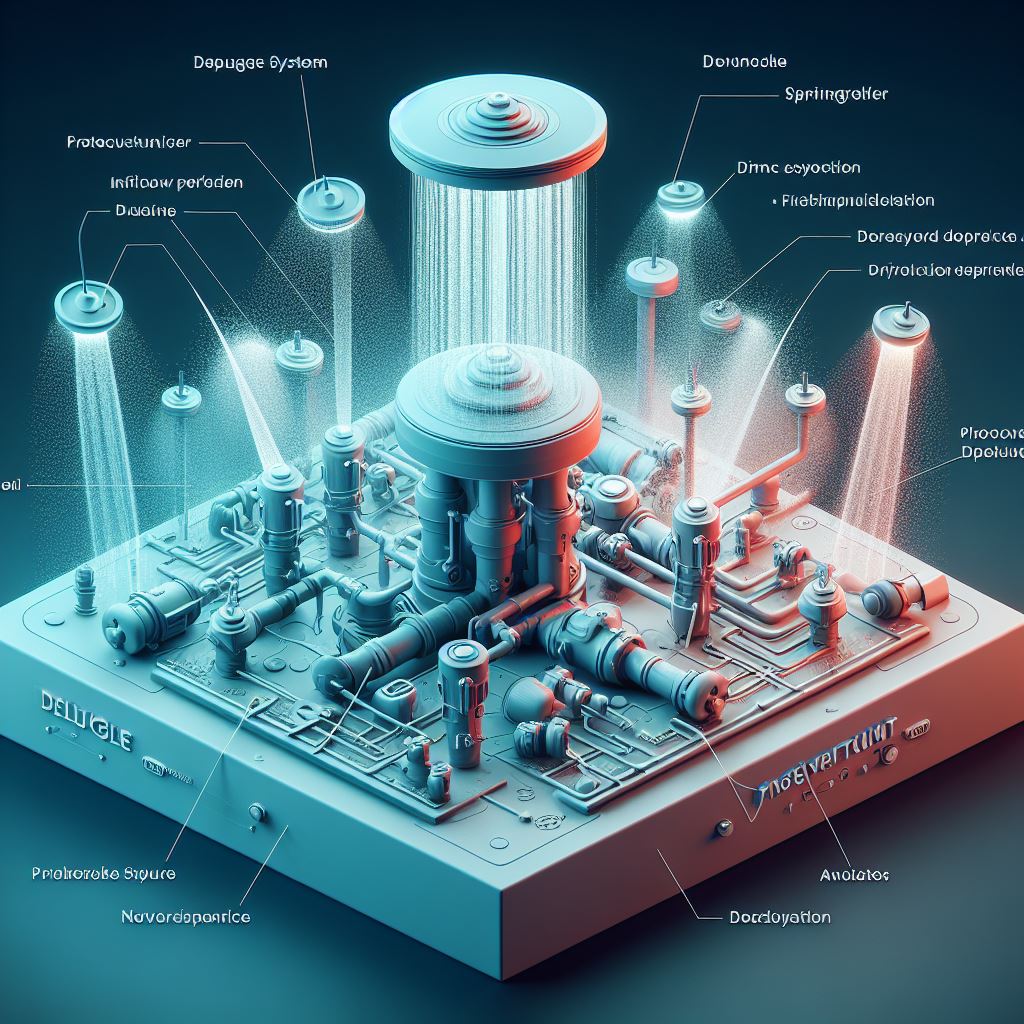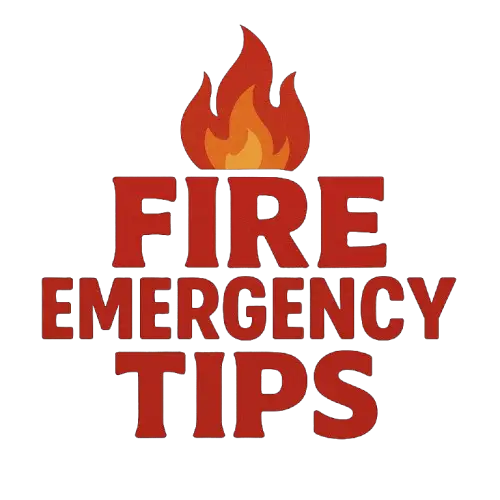
Deluge and Sprinkler systems are two common types of fire suppression systems used in buildings, factories, and other facilities. Both systems are designed to detect and suppress fires automatically and can be effective in reducing property damage and saving lives.
Deluge systems are designed to discharge large amounts of water quickly over a wide area to extinguish fires. Sprinkler systems are designed to activate individual sprinkler heads to control or extinguish fires in specific areas. Deluge systems are typically used for high hazard areas, while sprinkler systems are used for a wide range of occupancies.
However, there are significant differences between the two systems in terms of design, operation, and application.
In this article, I will explain the differences, similarities, and examples of these Deluge and Sprinkler systems:
Deluge System:
A Deluge system is a fire suppression system that uses open nozzles connected to a piping system that is connected to a water supply. Unlike a sprinkler system, the Deluge system releases large quantities of water through all of its nozzles at once.
- The system is activated by a special fire detection system, such as heat or smoke detectors, or manually by an operator.
- The Deluge system is designed to quickly flood an entire area with water to extinguish a fire, especially for high-hazard facilities, such as chemical plants, oil refineries, and aircraft hangars.
- The Deluge system is also suitable for fires involving flammable liquids, gases, and other hazardous materials, where rapid cooling and suppression are essential.
- In addition, the Deluge system can be used in outdoor locations to protect loading docks, storage areas, and other exposed areas.
The Deluge system is typically installed in a pre-action configuration, where the water is held back by a pre-action valve and released only after a fire is detected. This helps prevent accidental discharge and water damage to the protected area.
The Deluge system can also be used in a dry configuration, where the piping system is filled with air or nitrogen and the water is supplied only when the system is activated.
Sprinkler System:
A sprinkler system is a fire suppression system that uses a network of sprinkler heads connected to a piping system that is connected to a water supply.
Each sprinkler head is designed to release water only in the area where a fire is detected. The system is activated by heat-sensitive elements, such as fusible links or glass bulbs, that melt or break when exposed to high temperatures.
- The sprinkler system is designed to extinguish or control a fire by applying water directly to the source of the fire. The system is typically installed in buildings, such as offices, hotels, schools, and hospitals, where the risk of fire is lower and where the primary concern is to evacuate people safely.
- The sprinkler system can also be used in outdoor locations, such as parking garages and loading docks, to protect exposed areas.
The sprinkler system can be designed in several configurations, such as wet, dry, and pre-action. In a wet system, the piping system is filled with water, and the sprinkler heads are always charged with water, ready to release when activated.
In a dry system, the piping system is filled with air or nitrogen, and the water is supplied only when the system is activated. In a pre-action system, the water is held back by a pre-action valve and released only after a fire is detected.
Similarities:
Both Deluge and Sprinkler systems are designed to detect and suppress fires automatically. Both systems use a network of pipes and nozzles to distribute water evenly over a fire.
Both systems can be effective in reducing property damage and saving lives. Both systems can be designed in various configurations, such as wet, dry, and pre-action.
Differences:
There are several differences between Deluge and Sprinkler systems, including:
Design
The Deluge system uses open nozzles that release large quantities of water simultaneously, while the Sprinkler system uses individual sprinkler heads that release water only in the area where a fire is detected.
Application
The Deluge system is suitable for high-hazard facilities, such as chemical plants, oil refineries, and aircraft hangars, while the Sprinkler system is typically installed in buildings where the risk of fire is lower, such as offices, hotels, schools, and hospitals.
Activation
The Deluge system is activated by a special fire detection system, such as heat or smoke detectors, or manually by an operator, while the Sprinkler system is activated by heat-sensitive elements, such as fusible links or glass bulbs, that melt or break when exposed to high temperatures.
Water distribution
The Deluge system releases water through all of its nozzles at once, while the Sprinkler system releases water only in the area where a fire is detected.
Water supply
The Deluge system requires a larger water supply and higher water pressure than the Sprinkler system, due to the need to release large quantities of water simultaneously.
Examples of facilities where a Deluge system may be appropriate include:
- Chemical plants
- Oil refineries
- Aircraft hangars
- Power plants
- Fuel storage facilities
- LNG terminals
- Ammunition storage facilities
- Flammable liquid storage facilities
- Paper mills
- Textile mills
Examples of facilities where a Sprinkler system may be appropriate include:
- Offices
- Hotels
- Schools
- Hospitals
- Retail stores
- Warehouses
- Parking garages
- Data centers
- Museums
- Libraries
Conclusion
Deluge and Sprinkler systems are two common types of fire suppression systems used in buildings, factories, and other facilities. Both systems are designed to detect and suppress fires automatically and can be effective in reducing property damage and saving lives.
However, there are significant differences between the two systems in terms of design, operation, and application. Choosing the right system for a specific facility depends on several factors, such as the type of hazard, the size of the area to be protected, and the availability of water supply.
It is important to consult with a qualified fire protection engineer or contractor to determine the most appropriate fire suppression system for a specific facility.
Also Read:
